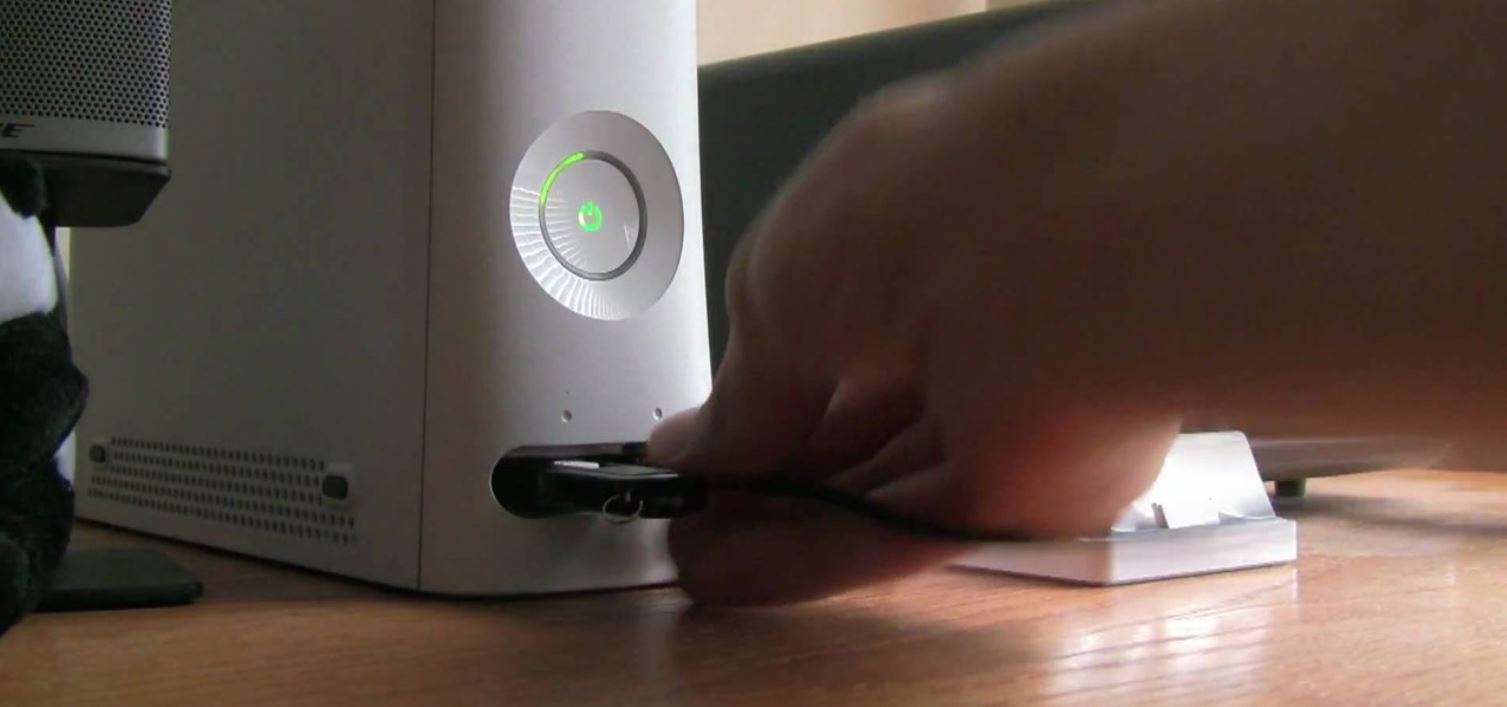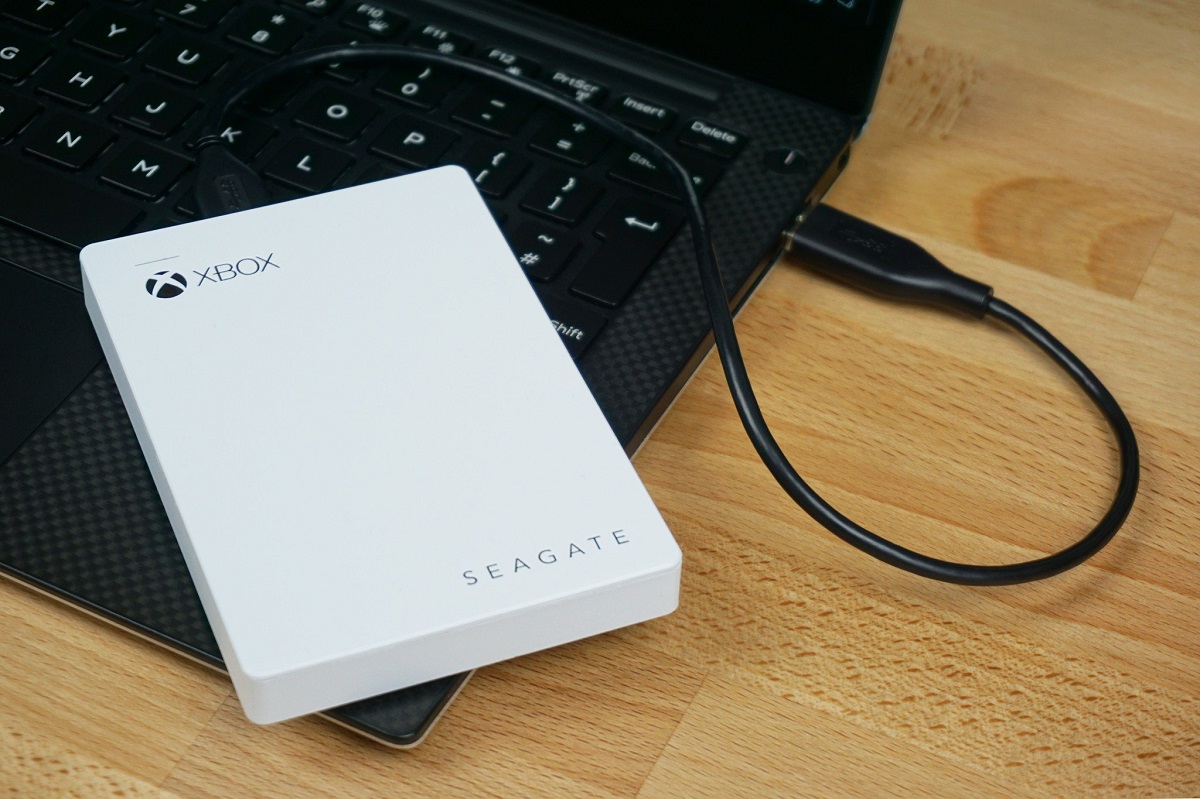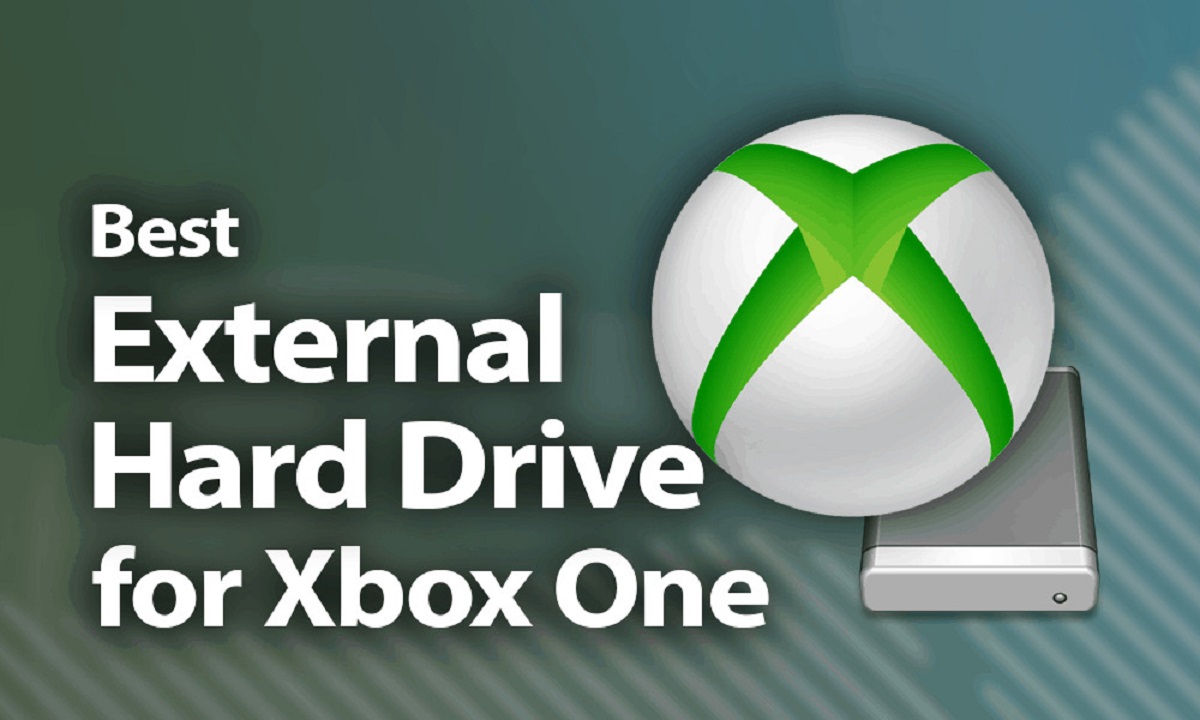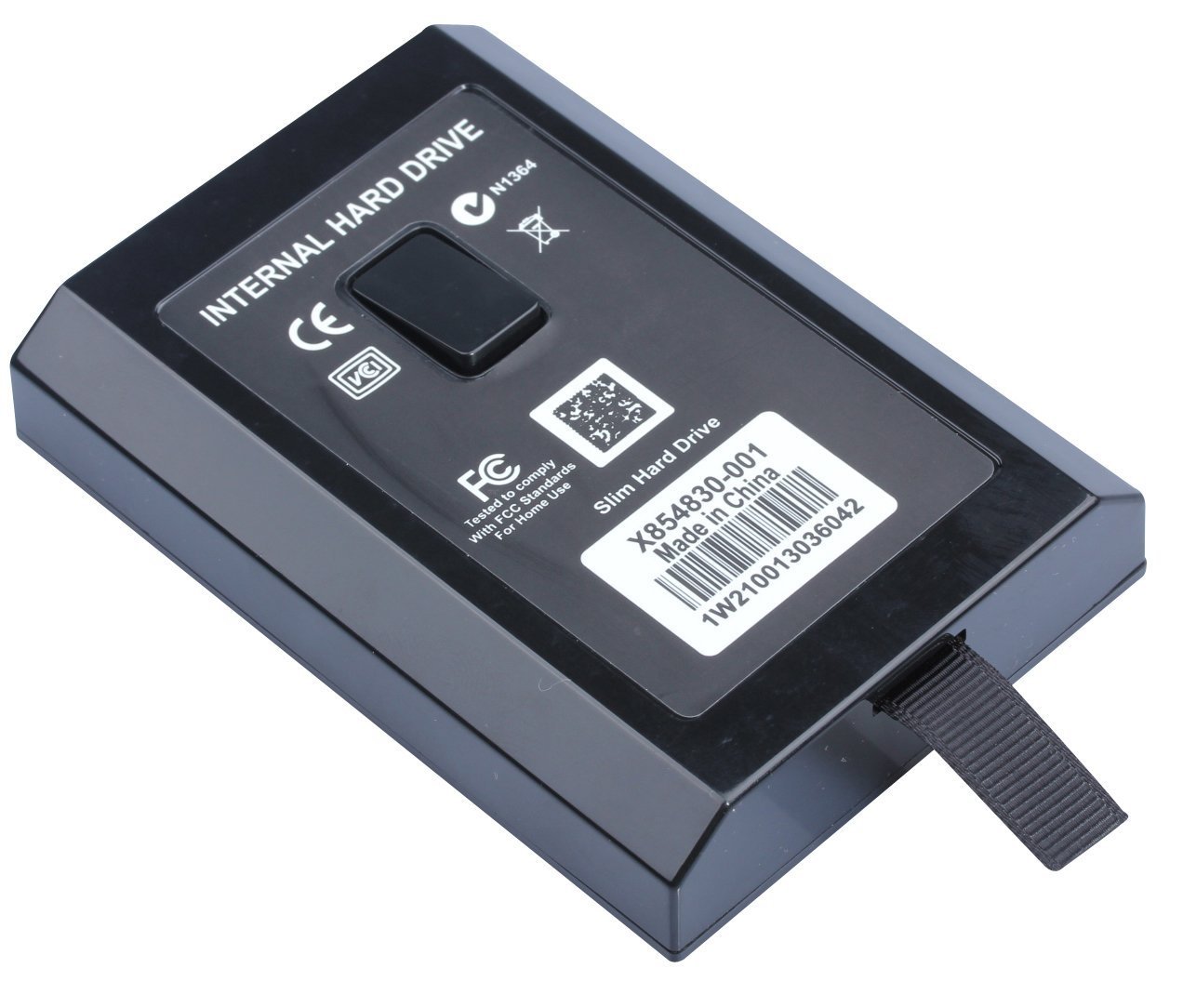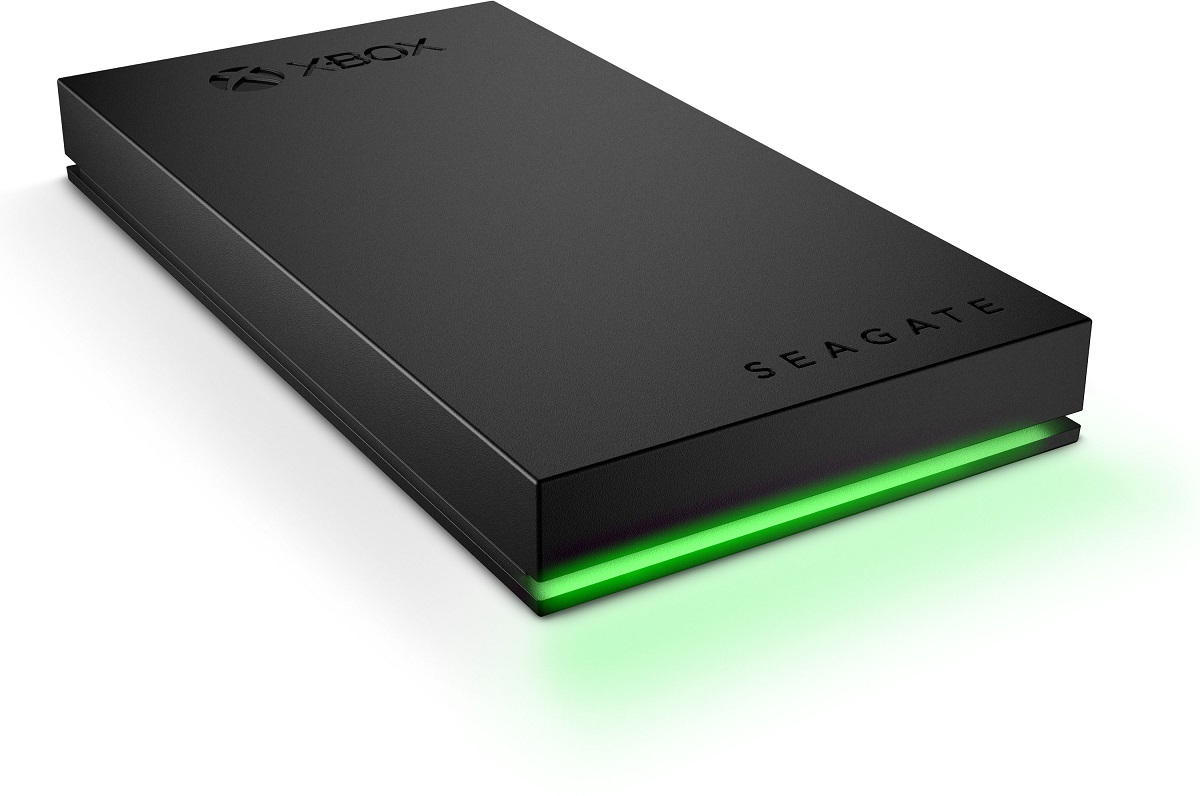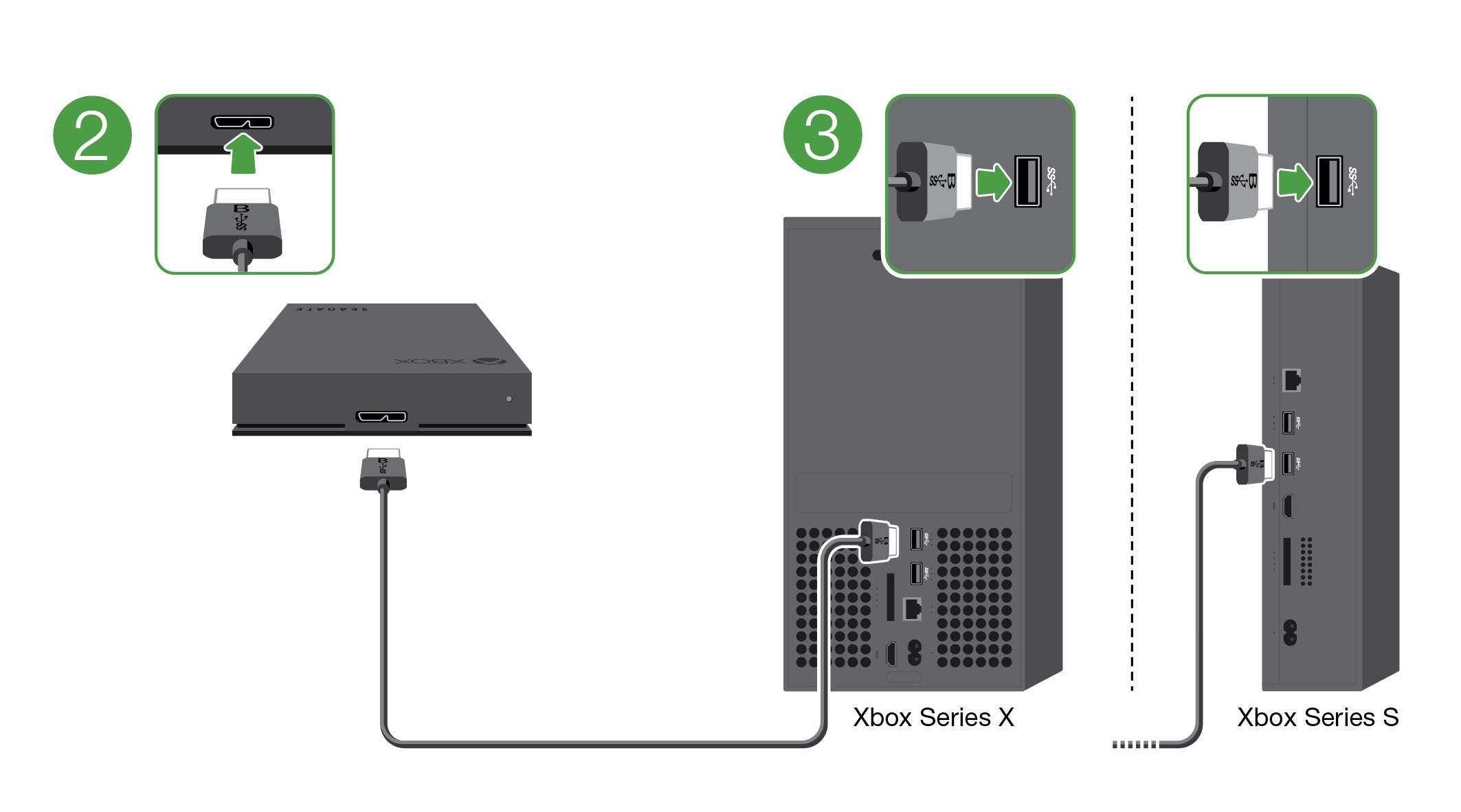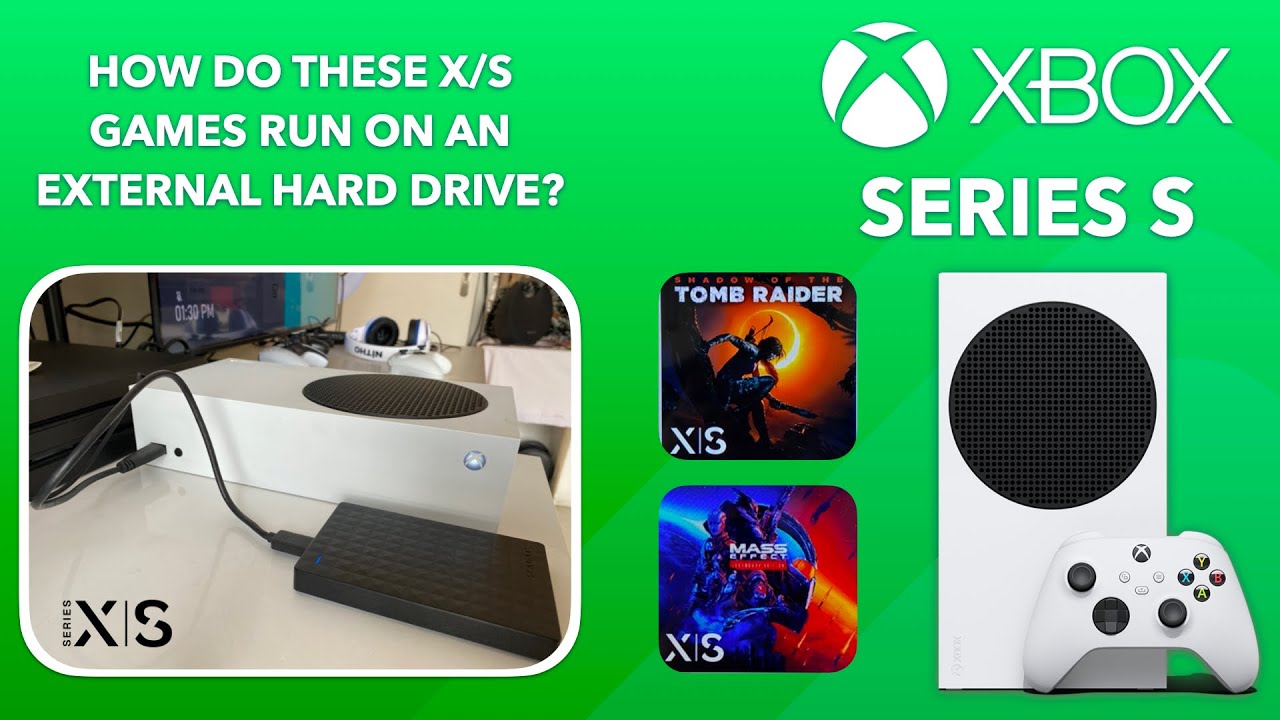Introduction
An external hard drive is a convenient and practical storage solution for Xbox gamers, offering additional space to store games, apps, and media files. However, it can be frustrating when your Xbox external hard drive stops working or encounters issues. There can be several reasons for this, ranging from compatibility issues to hardware failures.
Understanding why your Xbox external hard drive is not working is crucial in order to find a suitable solution. This article will delve into common reasons behind external hard drive issues for Xbox consoles and provide troubleshooting steps to help you resolve the problem.
Whether you recently purchased a new external hard drive or have been using one without any issues until now, it’s important to know that these issues can arise unexpectedly. It’s not uncommon for an external hard drive to stop working or encounter errors due to various factors.
In the following sections, we will explore common reasons that can lead to external hard drive issues and discuss troubleshooting steps that you can take to get your Xbox external hard drive working again. So let’s dive in and explore the possible causes and solutions for your malfunctioning external hard drive.
Common Reasons for External Hard Drive Issues
When faced with an external hard drive issue on your Xbox, it’s important to identify the root cause to effectively resolve the problem. Here are some common reasons why your Xbox external hard drive may not be working properly:
- Compatibility Issues: One of the primary culprits for external hard drive issues is compatibility. Not all external hard drives are designed to work seamlessly with Xbox consoles. Some may require specific formatting or have compatibility limitations. Make sure to check the compatibility of your external hard drive with your Xbox model.
- Insufficient Power Supply: Another common reason for external hard drive issues is an insufficient power supply. USB ports on your Xbox may not provide enough power to drive the external hard drive, resulting in connectivity or performance issues. It’s advisable to connect the external hard drive to a separate power source, such as a powered USB hub or an external power adapter.
- Corrupted File System: A corrupted file system can lead to errors and malfunctions on your external hard drive. This can occur due to improper ejection, sudden power loss, or software issues. When the file system gets corrupted, your Xbox may fail to recognize or access the external hard drive. Using disk repair tools or reformatting the drive may help resolve this issue.
- Hardware Failure: External hard drives, like any electronic device, can experience hardware failures over time. This can be due to physical damage, component malfunctions, or wear and tear. If your external hard drive is not working at all, making strange noises, or experiencing intermittent connectivity, it’s possible that there is a hardware failure.
By understanding the common reasons behind external hard drive issues, you can narrow down the potential causes and focus troubleshooting efforts on the appropriate solutions. In the next section, we will explore effective troubleshooting steps to help you get your Xbox external hard drive back in working order.
Compatibility Issues
Compatibility is a key factor when it comes to using an external hard drive with your Xbox console. Not all external hard drives are designed to work seamlessly with Xbox systems, and compatibility issues can result in your external hard drive not functioning properly. Here are some possible compatibility issues that you may encounter:
1. File System Compatibility: Different operating systems use different file systems to organize and store data. Xbox consoles typically support the NTFS and exFAT file systems for external storage devices. If your external hard drive is formatted with a file system that is not compatible with your Xbox, it may not be recognized or accessible. To resolve this, you can reformat your external hard drive using the appropriate file system.
2. USB Version: The USB version of your external hard drive can also impact compatibility. Xbox One consoles generally support USB 3.0 and newer versions, which offer faster transfer speeds compared to older USB 2.0 drives. If your external hard drive is a USB 2.0 device, it may still work with your Xbox but at slower speeds. Upgrading to a USB 3.0 or newer drive is recommended for optimal performance.
3. Power Requirements: Some external hard drives require more power than what the USB ports on your Xbox can provide. This can lead to connectivity issues or the drive not being recognized at all. To address this, you can use a powered USB hub or an external power adapter to supply sufficient power to your external hard drive.
4. Storage Capacity: Xbox consoles have specific limitations on the maximum storage capacity they can support for external hard drives. If your external hard drive exceeds the supported capacity, it may not function properly. Make sure to check the maximum capacity supported by your Xbox console and ensure that your external hard drive falls within that range.
5. Xbox Model Compatibility: Older Xbox models may have different compatibility requirements compared to newer ones. It’s important to check the compatibility of your external hard drive with your specific Xbox model. Some older models may have limitations on the size or type of external storage they can support.
It’s essential to check and address any compatibility issues to ensure that your Xbox external hard drive works as intended. Consider consulting the user manual or referring to the manufacturer’s website for detailed compatibility information. In the next section, we will discuss troubleshooting steps to resolve compatibility issues and get your external hard drive to function properly with your Xbox console.
Insufficient Power Supply
Insufficient power supply is a common issue that can cause problems with your Xbox external hard drive. The USB ports on your Xbox might not provide enough power to properly operate the external hard drive, leading to connectivity issues or slow performance. Here are some steps you can take to address this problem:
1. Use a Powered USB Hub: One solution to overcome insufficient power supply is to connect your external hard drive to a powered USB hub. A powered USB hub acts as a standalone power source, providing sufficient power to your external hard drive. Connect the USB hub to your Xbox, and then plug the external hard drive into the USB hub. This can help alleviate power-related issues and improve the overall performance of your external hard drive.
2. External Power Adapter: Another option is to use an external power adapter specifically designed for your external hard drive. Some external hard drives come with a separate power adapter that can be connected to an electrical outlet. This redirects power from the outlet to the external hard drive, ensuring that it receives an adequate power supply. Check the manufacturer’s instructions or website to find out if your external hard drive supports an external power adapter.
3. Disconnect Unnecessary Devices: If you have several USB devices connected to your Xbox, they may collectively draw too much power, leading to insufficient supply for the external hard drive. Try disconnecting any unnecessary USB peripherals to reduce the power load on the Xbox and prioritize the power supply for the external hard drive.
4. Charge Wirelessly: If your Xbox console supports wireless charging for controllers, consider utilizing this feature. By removing the USB cable used to charge the controller, you can free up more power from the USB ports for the external hard drive, potentially resolving power-related issues.
5. Try Different USB Ports: Experiment with plugging your external hard drive into different USB ports on your Xbox. Sometimes, certain USB ports may provide more power than others. Changing the USB port can help ensure that your external hard drive receives an adequate power supply for proper operation.
Resolving the issue of insufficient power supply can greatly enhance the performance and functionality of your Xbox external hard drive. By trying out the steps mentioned above, you can significantly improve your gaming experience and eliminate power-related issues. In the next section, we will discuss troubleshooting steps for addressing corrupted file system issues.
Corrupted File System
A corrupted file system can be a common cause of issues with your Xbox external hard drive. This can occur due to improper ejection, sudden power loss, or software malfunctions. When the file system becomes corrupted, it can lead to errors and prevent the proper functioning of your external hard drive. Here are some steps you can take to address this problem:
1. Check Disk Errors: Xbox consoles offer the option to check for disk errors on your external hard drive. Go to the settings menu and select “System.” From there, choose “Storage” and then select the external hard drive in question. Look for the option to check for disk errors, and initiate the process. This will scan and attempt to repair any errors in the file system of your external hard drive.
2. Reformat the External Hard Drive: If the disk error check does not resolve the issue, you may need to reformat the external hard drive. Formatting will erase all data on the drive, so make sure to back up any important files beforehand. Go to the settings menu on your Xbox, select “System,” then choose “Storage.” Select the external hard drive and look for the option to format the drive. Follow the on-screen instructions to complete the formatting process. Afterward, your external hard drive should be fresh and ready to use.
3. Use Disk Repair Tools: If you have access to a computer, you can connect your external hard drive to it and use disk repair tools to fix any file system errors. These tools can scan and repair the file system on your external hard drive, potentially resolving any corruption issues. Ensure that you select the appropriate tool for your operating system.
4. Test with Another Device: To further verify if the issue lies with the external hard drive or the Xbox console, you can test the drive on a different device. Connect the external hard drive to a computer or another gaming console and check if it functions properly. If it does, it indicates that the problem lies with the Xbox console itself, and you may need to seek further troubleshooting or repair for the console.
5. Update Xbox and Game Software: Keeping your Xbox console and game software up to date is also important for ensuring compatibility and preventing file system errors. Check for updates for both your Xbox console and the games you play. Updating the software can help resolve any known issues and improve overall performance.
By addressing and resolving any file system corruption issues, you can restore the functionality of your Xbox external hard drive. Follow the steps provided above to troubleshoot and restore the integrity of the file system. In the next section, we will discuss troubleshooting steps for identifying hardware failures that may be causing issues with your external hard drive.
Hardware Failure
If your Xbox external hard drive is not working at all, making strange noises, or experiencing intermittent connectivity issues, there is a possibility of hardware failure. Hardware failures can occur due to physical damage, component malfunctions, or wear and tear over time. Here are some steps you can take to identify and address potential hardware failures:
1. Physical Inspection: Begin by visually inspecting the external hard drive for any signs of physical damage. Look for cracks, dents, loose connectors, or any other visible issues. If you notice any physical damage, it is likely the cause of the hardware failure. Unfortunately, physical damage often requires professional repair or replacement.
2. Change USB Cable: Sometimes, a faulty USB cable can cause connectivity issues and make the external hard drive appear as if it has failed. Disconnect the USB cable from both the external hard drive and the Xbox console, and try using a different USB cable. This simple step can help determine if the issue lies with the cable rather than the actual external hard drive.
3. Try a Different USB Port: Test the external hard drive on different USB ports of your Xbox console. Sometimes, a specific USB port may have a loose or damaged connection that can interfere with proper functioning. By switching to a different port, you can determine if the problem is with a particular port or with the external hard drive itself.
4. Connect to a Different Device: Connect the external hard drive to a different device, such as a computer or another gaming console, to check if it is recognized and functions properly. If the external hard drive fails to work on multiple devices, it is likely experiencing a hardware failure. In such cases, professional data recovery services may be needed to retrieve the data, or the drive may need to be replaced.
5. Contact Manufacturer Support: If the above steps don’t resolve the issue, it is recommended to reach out to the manufacturer’s support for further assistance. They may be able to provide additional troubleshooting steps or offer warranty support if the external hard drive is still under warranty.
It is important to identify hardware failures accurately to determine the appropriate course of action. If your external hard drive has indeed encountered a hardware failure, it may require repair or replacement. Nevertheless, it is recommended to exhaust all available troubleshooting steps before considering these options. In the next section, we will provide troubleshooting steps to assist you in resolving Xbox external hard drive issues.
Troubleshooting Steps
When your Xbox external hard drive is not working properly, troubleshooting can help identify and resolve the underlying issues. Here are some steps you can take to troubleshoot and potentially fix your external hard drive problems:
1. Check Compatibility: Ensure that your external hard drive is compatible with your Xbox console. Check the manufacturer’s specifications and ensure that it meets the compatibility requirements. If necessary, update the firmware or drivers for your external hard drive.
2. Ensure Proper Power Supply: Verify that your external hard drive is receiving sufficient power. Connect it to a powered USB hub or an external power adapter, if required. Also, try different USB ports on your Xbox to rule out power-related issues.
3. Verify File System Integrity: Use the disk error check feature on your Xbox to scan and repair any file system errors. If that doesn’t work, consider reformatting the external hard drive. Remember to back up any important data before formatting.
4. Test External Hard Drive on Another Device: Connect your external hard drive to a computer or another gaming console to check if it functions properly on a different device. This will help determine if the issue is specific to your Xbox console or if the external hard drive itself is faulty.
5. Update Xbox and Game Software: Make sure your Xbox console and game software are up to date. Check for available updates and install them. Software updates often include bug fixes and compatibility improvements that can resolve issues with your external hard drive.
6. Reset Xbox to Factory Settings: As a last resort, you can try resetting your Xbox console to its factory settings. This will erase all data and settings, so make sure to back up any important information beforehand. Resetting can help resolve software-related issues that may be affecting the external hard drive.
7. Contact Customer Support: If you have exhausted all troubleshooting options and your external hard drive still doesn’t work, it may be time to contact customer support. Reach out to the manufacturer or Microsoft support for further assistance and possible warranty claims.
By following these troubleshooting steps, you can identify and resolve the issues with your Xbox external hard drive. However, it’s important to remember that not all problems can be fixed, especially in the case of hardware failures or physical damage. If all else fails, you may need to consider replacing the external hard drive.
Check Compatibility
When troubleshooting issues with your Xbox external hard drive, one of the first steps to take is checking for compatibility. Not all external hard drives are designed to work seamlessly with Xbox consoles, and compatibility issues can lead to various problems. Here are some key aspects to consider when checking compatibility:
1. Xbox Model: Different Xbox models may have specific requirements for external storage devices. Ensure that your external hard drive is compatible with your specific Xbox model. It’s worth noting that older Xbox models may have limitations in terms of supported storage capacity or file system compatibility.
2. File System: Xbox consoles typically support the NTFS and exFAT file systems for external storage devices. Make sure that your external hard drive is formatted with a compatible file system. If it’s not, you may need to reformat the drive to ensure compatibility.
3. USB Version: Check the USB version of your external hard drive. Xbox One consoles generally support USB 3.0 and newer versions, which offer faster data transfer speeds. If your external hard drive is a USB 2.0 device, it may still work but at slower speeds. Consider upgrading to a USB 3.0 or newer drive for optimal performance.
4. Power Requirements: Some external hard drives require more power than what the USB ports on your Xbox can provide. Insufficient power supply can lead to connectivity issues or drive malfunctions. Check the power requirements of your external hard drive and ensure that it is receiving sufficient power. Using a powered USB hub or external power adapter can help in such cases.
5. Storage Capacity: Xbox consoles have limitations on the maximum storage capacity they support for external hard drives. If your external hard drive exceeds the supported capacity, it may not work properly. Check the maximum capacity supported by your Xbox console and ensure that your external hard drive falls within that range.
6. Manufacturer’s Compatibility Information: Consult the manufacturer’s documentation or website for specific compatibility information. They may provide a list of recommended external hard drives that have been tested and verified to work well with Xbox consoles.
Checking compatibility is crucial to ensure that your Xbox external hard drive functions properly. It helps prevent potential issues and ensures the best performance for your gaming and storage needs. If your current external hard drive is not compatible, consider investing in a compatible one to avoid future problems.
Ensure Proper Power Supply
Proper power supply is essential for the smooth functioning of your Xbox external hard drive. Insufficient power can lead to connectivity issues, performance problems, or the drive not being recognized at all. To ensure that your external hard drive receives adequate power, consider the following steps:
1. Use a Powered USB Hub: If you find that the USB ports on your Xbox console are not providing enough power, connecting your external hard drive to a powered USB hub can help. A powered USB hub acts as a standalone power source, providing sufficient power to your external hard drive. Connect the USB hub to your Xbox, and then plug the external hard drive into the USB hub to ensure it gets the necessary power supply.
2. External Power Adapter: Some external hard drives come with an external power adapter that can be connected to an electrical outlet. This directs power from the outlet to the external hard drive, ensuring it receives adequate power. Check if your external hard drive supports an external power adapter and use it if necessary.
3. Disconnect Unnecessary Devices: If you have multiple USB devices connected to your Xbox console, they can collectively draw too much power, leading to insufficient supply for the external hard drive. Disconnect any unnecessary USB peripherals and prioritize the power supply for your external hard drive.
4. Check USB Cable: Ensure that the USB cable connecting your external hard drive to the Xbox console is not damaged or faulty. A damaged cable can result in a poor power connection, leading to power-related issues. Replace the USB cable with a new one if needed.
5. Try Different USB Ports: Test different USB ports on your Xbox console. Sometimes, certain ports may provide more power than others. Switching to a different port can help ensure that your external hard drive receives the necessary power supply for proper operation.
By ensuring proper power supply to your external hard drive, you can resolve power-related issues and improve its performance. Remember to check the manufacturer’s instructions for power requirements and any additional recommendations specific to your external hard drive model. Moving forward, we will discuss troubleshooting steps to verify the integrity of the file system on your external hard drive.
Verify File System Integrity
The file system on your Xbox external hard drive plays a crucial role in the proper functioning of the drive. When the file system becomes corrupted, it can lead to errors, malfunctions, or the drive not being recognized by your Xbox console. To ensure the integrity of the file system, follow these steps:
1. Check for Disk Errors: Xbox consoles offer the option to check for disk errors on your external hard drive. Go to the settings menu, select “System,” and then choose “Storage.” From there, select the external hard drive in question and look for the option to check for disk errors. Initiate the process to scan and attempt to repair any errors in the file system of your external hard drive.
2. Reformat the External Hard Drive: If the disk error check does not resolve the issue, reformatting the external hard drive may be necessary. Reformatting will erase all data on the drive, so make sure to back up any important files beforehand. To reformat, go to the settings menu on your Xbox console, select “System,” and then choose “Storage.” Select the external hard drive and look for the option to format the drive. Follow the on-screen instructions to complete the formatting process.
3. Use Disk Repair Tools: If you have access to a computer, you can connect the external hard drive to it and use disk repair tools to fix any file system errors. Disk repair tools can scan and repair the file system on your external hard drive, potentially resolving any corruption issues. Ensure you select a tool that is compatible with your operating system.
4. Test with Another Device: To further verify if the issue lies with the external hard drive or the Xbox console, connect the drive to a different device, such as a computer or another gaming console, and check if it functions properly. If it does, it indicates that the problem likely lies with the Xbox console itself, and you may need to seek further troubleshooting or repair for the console.
5. Update Xbox and Game Software: Keeping your Xbox console and game software up to date is essential for compatibility and preventing file system errors. Check for updates for both your Xbox console and the games you play. Updating the software can help resolve any known issues and improve the overall performance of your external hard drive.
By verifying the integrity of the file system on your Xbox external hard drive, you can ensure that it operates smoothly and is recognized by your console. Follow the steps provided above to troubleshoot and restore the integrity of the file system. In the next section, we will discuss troubleshooting steps to address potential hardware failures that may be causing issues with your external hard drive.
Test External Hard Drive on Another Device
If you’re experiencing issues with your Xbox external hard drive, one effective troubleshooting step is to test it on another device. This process can help determine whether the problem lies with the external hard drive itself or with your Xbox console. Here’s how you can perform the test:
1. Connect to a Different Device: Disconnect the external hard drive from your Xbox console and connect it to a different device, such as a computer or another gaming console. Ensure that the device is compatible with the external hard drive’s file system (e.g., NTFS or exFAT).
2. Verify Drive Recognition: Once connected to the alternate device, check if it recognizes the external hard drive. If the device detects the drive and displays its contents, it indicates that the external hard drive is functioning properly, and the issue might lie with your Xbox console.
3. Copy and Access Files: Test the external hard drive by copying files from the alternate device to the drive. This will help assess if the drive transfers data correctly and if you can access the files without any errors or interruptions.
4. Monitor Drive Performance: Pay attention to the performance of the external hard drive on the alternate device. Ensure that it operates smoothly, without experiencing frequent disconnects, slow transfer speeds, or unusual noises. Any abnormal behavior may indicate a hardware issue with the drive.
5. Compare with Known Working Drive: If possible, compare the performance of the external hard drive in question with a known working drive of similar specifications. This can help confirm whether the issue is specific to the drive or if it’s a general problem with external storage devices on the alternate device.
Testing your Xbox external hard drive on another device is a reliable way to determine the source of the problem. If the drive performs well on the alternate device, it suggests that the issue lies with your Xbox console. However, if the drive exhibits the same problems on the alternate device, it points to a possible hardware issue with the external hard drive itself.
Keep in mind that if your external hard drive proves to be faulty, you may need to consider professional data recovery services if you have valuable data on the drive. Alternatively, if the drive is under warranty, contacting the manufacturer’s support for further assistance or a possible replacement may be a viable option.
In the next section, we will discuss the importance of keeping your Xbox console and game software up to date to prevent compatibility issues.
Conclusion
Dealing with issues related to your Xbox external hard drive can be frustrating, but understanding the common reasons behind these problems and following effective troubleshooting steps can help you resolve them. Compatibility issues, insufficient power supply, corrupted file systems, and hardware failures are all possibilities when your external hard drive is not working properly.
Begin by checking compatibility to ensure that your external hard drive meets the requirements of your Xbox console. Verify the file system, USB version, power requirements, and storage capacity. If compatibility is not the issue, focus on ensuring proper power supply by using a powered USB hub or an external power adapter.
File system integrity is also crucial. Check for disk errors and consider reformatting the external hard drive if needed. Utilizing disk repair tools or connecting the drive to another device can help verify and resolve file system issues. Additionally, testing the external hard drive on another device will help identify whether the problem lies with the drive itself or with the Xbox console.
Remember to keep your Xbox console and game software up to date, as updates can enhance compatibility and resolve potential issues. Consult the manufacturer’s support if necessary and consider seeking professional assistance for hardware failures or physical damage.
By following these troubleshooting steps and being proactive in addressing external hard drive issues, you can ensure a smooth and reliable gaming experience. Lastly, it’s important to note that prevention is key, and regularly backing up your data will help safeguard against the potential loss of important files and alleviate the impact of any future incidents.









